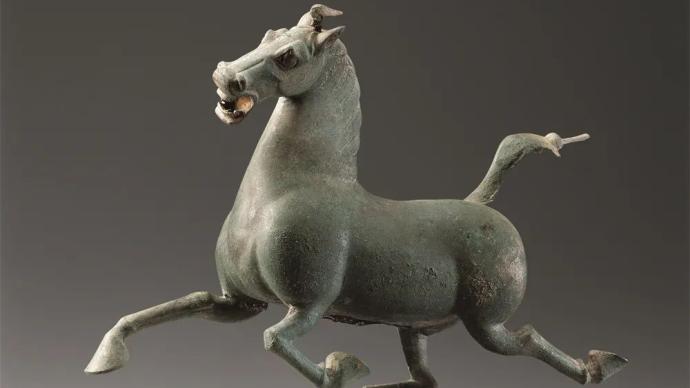
June 11, 2022 is the Cultural and Natural Heritage Day, and this year's Cultural and Natural Heritage Day will host city events in Lanzhou.
The Paper learned that in the past five years, Gansu Province has invested a total of more than 2.5 billion yuan to carry out 724 cultural relics protection and maintenance projects, and the dangers of national insurance units and important provincial insurance units have been basically eliminated.
Gansu has 16,895 immovable cultural relics, including 7 world cultural heritages, 152 national key cultural relics protection units, and 532 provincial cultural relics protection units. There are 231 museums with 423,400 pieces (sets) of movable cultural relics, including 117,400 pieces (sets) of precious cultural relics. There are 63 memorial halls of various types, 483 immovable revolutionary cultural relics, 12536 movable revolutionary cultural relics (sets), including 4466 precious cultural relics (sets). There are 4 famous historical and cultural cities at the national level and 8 famous historical and cultural cities at the provincial level... The historical relics and red relics are dotted with each other, and the silence is better than the sound.
Protect the first scientific plan to keep the root and soul
Cultural relics protection, merit in the contemporary, benefit in the future.
"Implementation Opinions on Strengthening the Reform of the Protection and Utilization of Cultural Relics", "Implementation Opinions on the Revolutionary Cultural Relics Protection and Utilization Project", "Implementation Opinions on Strengthening the Protection and Utilization of Grotto Temples", "Gansu Province Great Wall Protection Regulations", "Gansu Bingling Temple Grottoes Protection Regulations" "Administrative Measures for the Safety of Cultural Relics in Gansu Province"... In recent years, Gansu has made great efforts to improve the system and mechanism of cultural relics protection. Provincial-level cultural relics protection regulations and measures have been issued one after another, and local cultural relics protection systems have been continuously standardized, providing a legal system guarantee for the protection of cultural relics in accordance with the law. .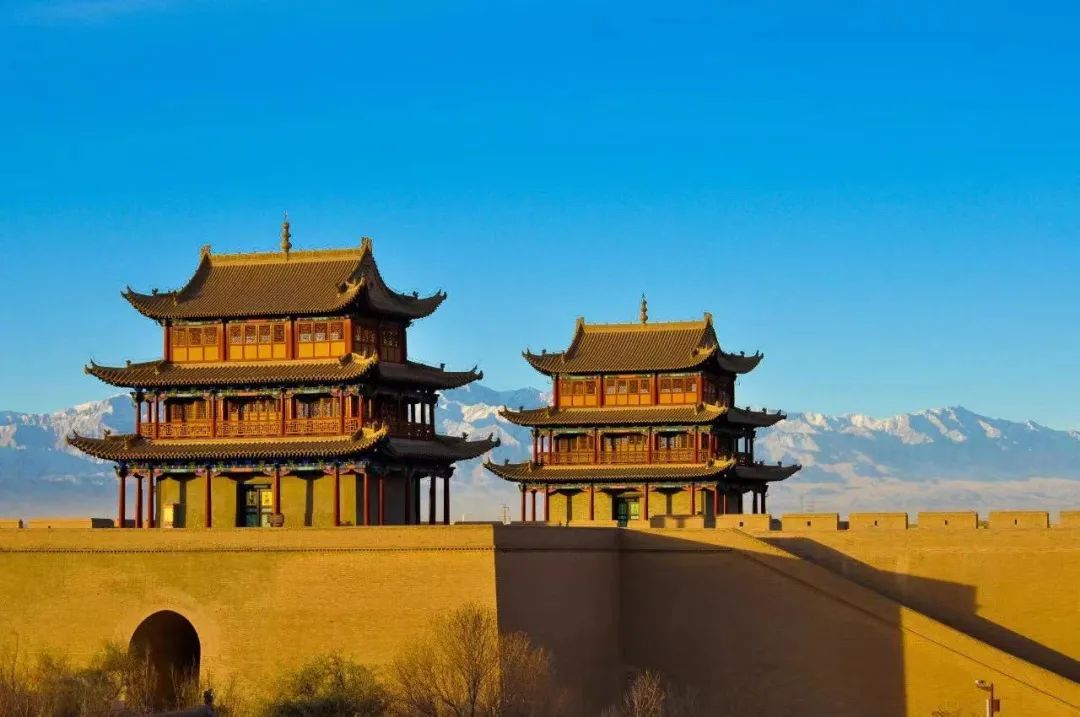
In the past five years, Gansu Province has invested a total of more than 2.5 billion yuan to carry out 724 cultural relics protection and maintenance projects.
Relying on the natural geographical unit of the Hexi Corridor, based on its important position in the history of Chinese civilization and the development of the Chinese nation, the country's first national cultural heritage route that integrates protection, research, inheritance and promotion, and innovation and utilization - the progress of the "Hexi Corridor National Heritage Route" Successfully, 11 state-supported projects with a capital of more than 70 million yuan have been launched, and key protection and utilization projects such as Suoyang City Ruins, Xuanquanzhi Ruins, Zhangye Dongcang, and Wuwei Confucian Temple have been launched.
"Complete the preparation of the special plan for the protection and utilization of cave temples in Gansu by the end of September 2021; implement a major project for the protection of cave temples, and completely eliminate major dangers in cave temples by the end of 2022; conduct regular health assessments of cultural relics, actively carry out preventive protection, and comprehensively improve the protection of cave temples Ability..." According to the "Implementation Opinions on Strengthening the Protection and Utilization of Grotto Temples" issued by the Gansu Provincial Government, the protection work of the Grotto Temples in Gansu has been pushed forward. Improve the reputation of "Hometown of Grotto Art in Gansu".
The construction and protection plan for the Great Wall, the Long March and the Yellow River National Cultural Park (Gansu section) has been compiled, and Gansu has been included in the national key support provinces. 84 construction projects including Yumen Pass, Jiayuguan Great Wall, Hadapu Red Town, Huining Huishi Site, Dadiwan Site, and Majiayao Site are being accelerated.
Tracing the origin and exploring the unknown, great achievements have been made
Gansu is one of the important birthplaces of Chinese civilization, a key area for the formation and development of Chinese civilization, and an important stage for the exchange and integration of Eastern and Western civilizations.
6 items were selected as "Top Ten New Archaeological Discoveries in China", 4 items were selected as "New Archaeological Discoveries in China", 4 items were selected as "Hundred Years of Archaeological Discoveries", 5 items were awarded "Field Archaeology Award", and 4 items were included in "Archaeological China" Major Projects: Focusing on major projects such as "Chinese Civilization Exploration Project" and "Archaeological China", a series of major archaeological projects such as human origin and evolution, agricultural origin and diffusion, civilization origin and spread, national origin and development, and ethnic exchanges and integration are carried out. The archaeologists' arduous exploration and continuous struggle in Gansu have yielded fruitful results, further clarifying the origin and evolution of early humans and the formation and development of Chinese civilization, demonstrating Gansu's position in the history of Chinese civilization and the development of world civilization.
In 2019, the Baishiya Karst Cave Site in Xiahe County became the first Paleolithic archaeological site in East Asia where Denisovan fossils and Denisovan DNA were found. Significant progress has been made in prehistoric archaeology on the Qinghai-Tibet Plateau, and it is also an international Denisovan archaeological site. The major breakthrough in the study of the tile people has received extensive attention from the academic circles and the public.
In recent years, the Gansu Provincial Institute of Cultural Relics and Archaeology, together with the Institute of Vertebrate Paleontology and Paleoanthropology of the Chinese Academy of Sciences and Lanzhou University and other scientific research institutes, have conducted an archaeological survey of the Shuiluo River, Qingshui River and Hulu River in the eastern part of the Longxi Loess Plateau. More than 20 Paleolithic sites have basically established the Paleolithic archaeological chronological framework in Gansu, especially in the western Loess Plateau from the late Middle Pleistocene to the Late Pleistocene (200,000 to 10,000 years ago). , the development of human behavior, the relationship between the evolution of human adaptive behavior and environmental changes, etc., provide key materials.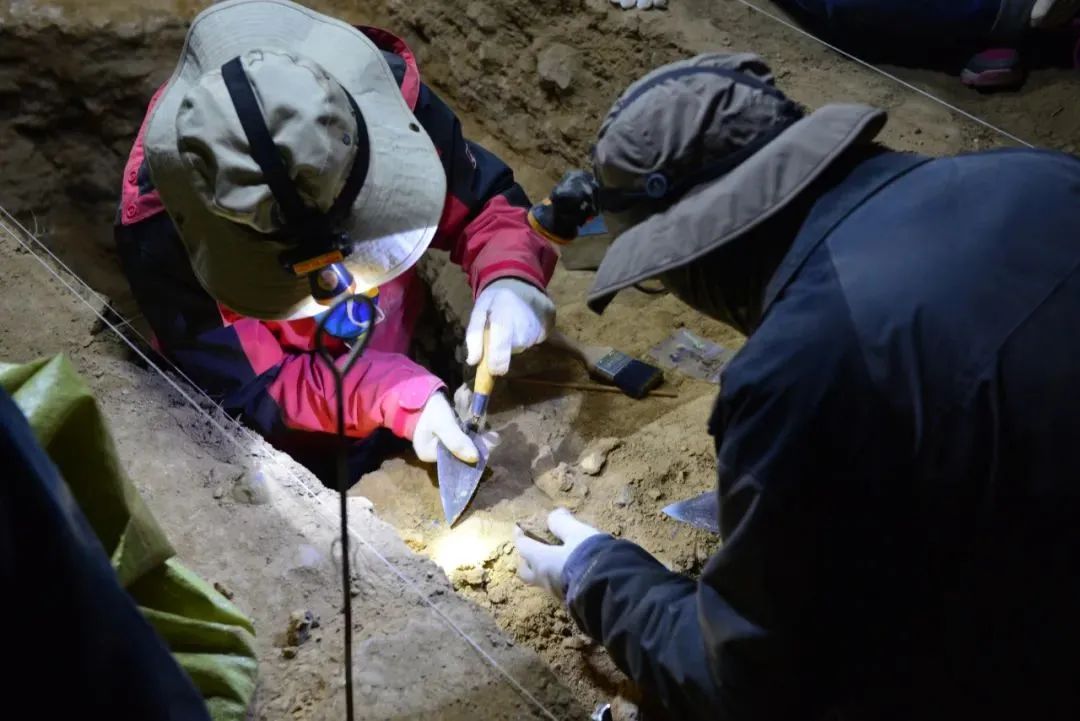
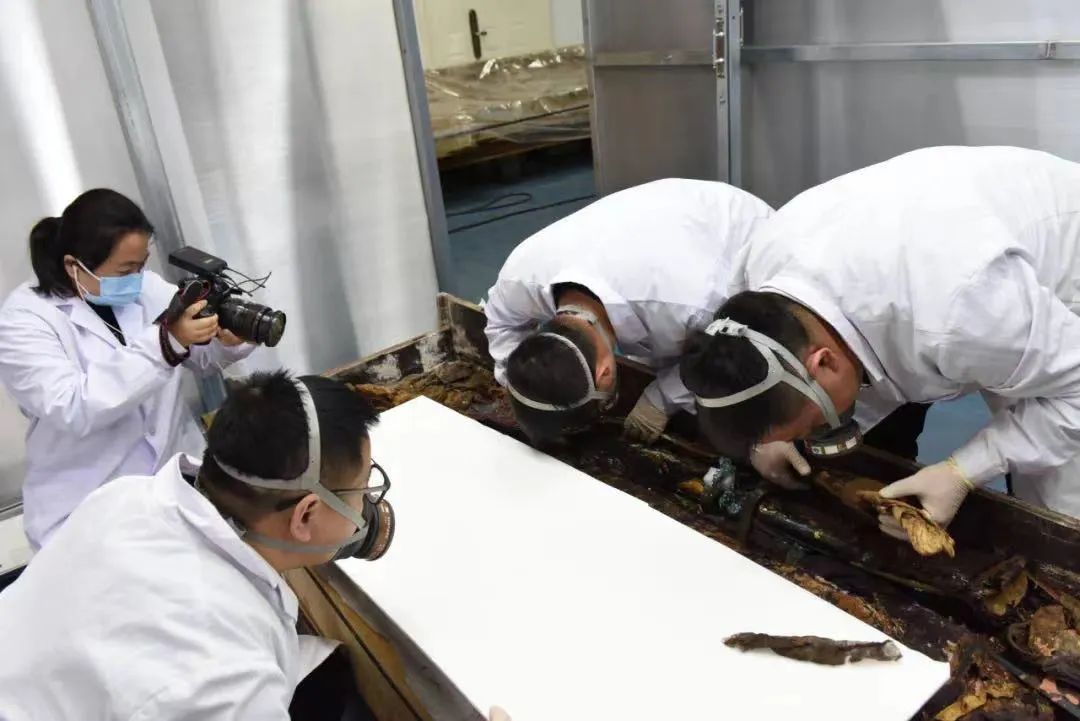
Lixian Luanting Mountain Site, Xishan Site, Dabaozi Mountain Site, Liubatu Site, Qingshui Liya Site, Gangu Maojiaping Site, Zhangjiachuan Xirong Noble Cemetery, Qin'an Wangwa Cemetery, Zhangxian Dunping Cemetery and Ning County The archaeological excavations of a series of early Qin culture or Xirong and Zhou culture sites closely related to the Qin culture, such as the Shijia tombs, have made the cultural landscape of the two-week period in this area clearer, and provided new clues and solutions for solving unresolved problems. new ideas.
Relying on the project of "Investigation, Excavation and Research of Early Metallurgical Sites in Hexi Corridor", the excavation of Xichengyi Site, Konggangwa Site and Huoshiliang Site confirmed that a new archaeological culture, Xichengyi Culture, was named and constructed the Heihe River. Chronological sequence and developmental genealogy of prehistoric archaeological cultures in the basin.
For the first time, the Tuyuhun script and the Tuyuhun Pengzi family cemetery were confirmed; for the first time, a huge number of well-preserved and diverse Tang Dynasty silk fabrics were discovered for the first time... For the first time, the Tuyuhun royal family tombs of the Tang Dynasty in Wuwei, Gansu, were selected as the top ten new archaeological discoveries in the country in 2021. The discovery of this tomb group vividly reveals the historical facts that the Tuyuhun people gradually integrated into the Chinese civilization system in the hundred years since their return to the Tang Dynasty, and provides a glimpse of the changes in historical details such as the ideological concepts, material life, and cultural identity of the Tuyuhun people who returned to the Tang Dynasty. Historical testimony of the formation and development of nation-states, as well as exchanges and integration.
Integrate innovation and development into the overall situation and nourish the society
There are 231 museums in Gansu, with 117,470 pieces/set of precious cultural relics (the actual number is 251,890 pieces). During the "Thirteenth Five-Year Plan" period, more than 1,000 temporary exhibitions of various types were held, and more than 12,000 social and educational activities such as "Four Progress" and research were carried out, and more than 150 million visitors were received...
Since the 18th National Congress of the Communist Party of China, Gansu's museum undertaking has developed vigorously, and has basically formed a new development pattern of the province's museum undertaking with a rational layout, diverse subjects and distinctive features.
Implement the museum exhibition curator system, and take the construction of new museums and the renovation of old exhibitions as opportunities to guide museums to hold various types of exhibitions based on the characteristics of their collections to meet the diverse needs of audiences.
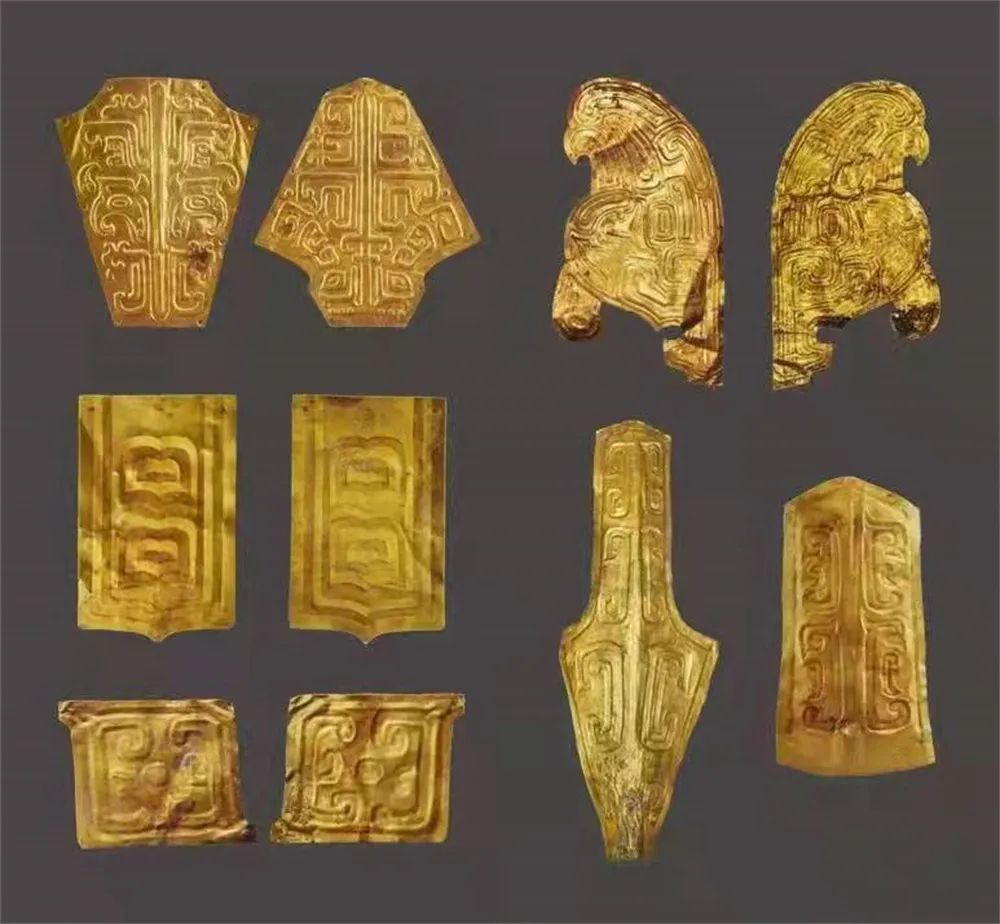
Introduce the "Silk Road World of Hirayama Ikuo" exhibition and "Cultural Exchange on the Silk Road" exhibition, and send brand-new cultural products to the people of Longyuan. Exhibitions such as "Taking a Long Journey", "Silk Road", "The First Light of the Country", and "Competing for Huaguan" held in the Palace Museum and the National Museum of China have been widely praised.
A museum is a university. Promoting the improvement of the traditional cultural literacy of young people and the cultivation of patriotic feelings is an important mission entrusted to the museum by the times.
All museums in Gansu have set up special places such as youth activity centers, established a collaborative mechanism with the education department, signed a joint construction agreement with the school, through "creating a series of themes, planning a special exhibition, compiling a set of theme teaching plans, and carrying out a group of social education. “Six Ones” of activities, designing a high-quality research course, and building an excellent brand of social education”, organically combining museums with classroom education in primary and secondary schools, social practice activities, and experiential teaching, so as to achieve the goal of cultivating people and educating people through culture. people.
According to statistics, museums in Gansu Province organize an average of 2,400 youth education activities each year, involving nearly 100,000 people.
Systematic protection, joint management and inheritance of red genes
Gansu has a large number of revolutionary cultural relics with rich connotations, wide distribution and distinctive features. Among them, the cultural relics related to the Shaanxi-Gansu Revolutionary Base, the Long March and the Red West Road Army are the most influential.
The seal of the People's Commissar of Finance of the Soviet Government, the suicide note of the martyr Wang Xiaoxi, the birch bark return list... The former site of the Bangluo Town Meeting, the Huining Reunion Tower, the Monument of the Chinese Workers and Peasants' Red Army West Road Army... Pieces of precious cultural relics, revolutionary relics everywhere, records, Witnessing the revolutionary history, carrying and conveying the original mission, it is a precious wealth that inherits the spirit of the revolutionary ancestors and gathers the forge ahead.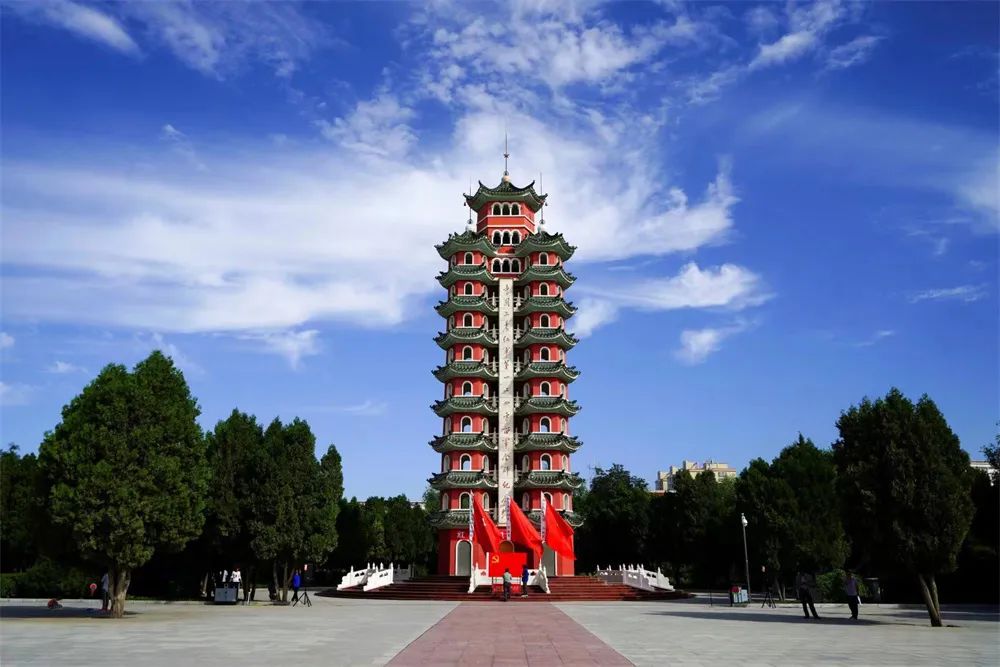
 The "Implementation Opinions on Further Strengthening the Protection and Utilization of Revolutionary Cultural Relics in the Province" was issued to clarify the task book and roadmap for the work of revolutionary cultural relics in the new era. The Gansu Provincial Bureau of Cultural Relics has added the Revolutionary Cultural Relics Office, adding 5 staff. The provincial finance has included the city and county-level revolutionary cultural relics protection units into the scope of provincial-level cultural relics protection special funds. The development and reform department has listed the construction of cultural relics protection and utilization facilities as key support objects. The work pattern of revolutionary cultural relics under the leadership of the party committee, department assistance, regional linkage, and joint management has basically taken shape.
The "Implementation Opinions on Further Strengthening the Protection and Utilization of Revolutionary Cultural Relics in the Province" was issued to clarify the task book and roadmap for the work of revolutionary cultural relics in the new era. The Gansu Provincial Bureau of Cultural Relics has added the Revolutionary Cultural Relics Office, adding 5 staff. The provincial finance has included the city and county-level revolutionary cultural relics protection units into the scope of provincial-level cultural relics protection special funds. The development and reform department has listed the construction of cultural relics protection and utilization facilities as key support objects. The work pattern of revolutionary cultural relics under the leadership of the party committee, department assistance, regional linkage, and joint management has basically taken shape.
Gansu continues to promote the transformation of revolutionary cultural relics from salvage protection to preventive protection, from primary protection to integrated protection of the surrounding environment, and from a single cultural relic point to linear and regional cultural relics overall protection. To maximize the preservation of the true historical features of revolutionary cultural relics.
Carry out in-depth investigation of revolutionary cultural relics resources, find out the family background and preservation status, and establish a database of revolutionary cultural relics. Continue to improve the "four have" work of revolutionary cultural relics protection units at all levels, clarify protection requirements, implement management and protection responsibilities, and ensure the safety of cultural relics. In 2021, the list of the first batch of immovable revolutionary cultural relics and the first batch of precious movable revolutionary cultural relics in Gansu Province will be announced. There are 483 immovable revolutionary cultural relics and 12536 movable revolutionary cultural relics (sets), including 4466 precious cultural relics (sets). ).
Since 2017, Gansu has invested a total of 120 million yuan, and successively implemented nearly 100 cultural relics protection and utilization projects such as the former site of the revolutionary government in Nanliang, Shaanxi and Gansu, the former site of the Liangdang mutiny, and the camp of Comrade Mao Zedong's Long March in Sancha. The revolutionary cultural relics have basically eliminated major dangers. Conservation status has improved significantly.
Implement the protection and utilization projects of important nodes of the Long March line such as the former site of the Red Army reunion in Huining, the former site of the Bangluo Town meeting, and the former site of the Liangdang mutiny, create a model for the protection and utilization of the former Hadapu meeting site, and gradually form 9 major protection nodes, 3 centralized display belts, 9 The core exhibition garden supports and connects with each other in the Long March cultural relics protection and exhibition system.
The overall planning for the protection and utilization of revolutionary cultural relics in the Shaanxi-Gansu Area, the Shaanxi-Gansu-Ningxia Area (Qingyang City) and the West Route Army Area (Gansu Section) has been completed, and the protection and utilization of 54 revolutionary cultural relics including the former residence of Xi Zhongxun and the site of the West Route Army Yongchang Battle has been promoted in an orderly manner. The project has formed a new situation of the protection and utilization of revolutionary cultural relics of overall planning, contiguous protection, overall display and cascade utilization.
Give full play to the advantages of revolutionary cultural relics resources, and serve the education of party history, the education of revolutionary traditions, and the education of patriotism. Create a new model of "Internet + revolutionary cultural relics". Under the reunion tower, singing red songs, watching performances, visiting memorial halls, and listening to red stories, Huining has become the first choice for the majority of party members to realize their original aspirations and receive education.
Huining, Nanliang, Hadapu and other places combined the protection and utilization of revolutionary cultural relics with the help of rural revitalization, and coordinated the protection and management of ontology, environmental improvement, infrastructure construction, research and interpretation, and research to enhance the people's sense of gain, Happiness.
Keep in mind the entrustment to forge ahead and achieve results one after another
"We must cherish this precious cultural heritage left to us by our ancestors, adhere to the concept of giving priority to protection, strengthen the protection of grotto architecture, painted paintings, and murals, and use advanced science and technology to improve the level of protection, so as to pass on this world cultural heritage from generation to generation." General Secretary Xi Jinping's earnest exhortation has always been remembered by the people of the Mogao Grottoes.
Relying on the Dunhuang Research Institute to build the country's first multi-field coupling laboratory, set up the Dunhuang Cultural Relics Protection Research Center in Gansu Province, actively promote the establishment of the national key laboratory in the field of cultural heritage and achieve phased results, and carry out 65 research projects on cultural relics protection at the provincial and ministerial levels. Efficiently complete the tasks of the national key scientific research platform.
The revision of the "Dunhuang Mogao Grottoes Protection Plan" and the construction of the Gansu Grotto Heritage Monitoring Center, the Mogao Grottoes Digital Display Center (Phase II) and the Dunhuang Cultural Heritage Protection Innovation Base are progressing in an orderly manner. It has successively invested more than 200 million yuan to implement more than 100 comprehensive protection and utilization projects such as restoration of Dunhuang murals, rescue and protection, digitization of cultural relics, and infrastructure improvement. management mode, and promote the application in the cave temples in the province, and continue to expand the coverage of "Chinese characteristics, Dunhuang experience".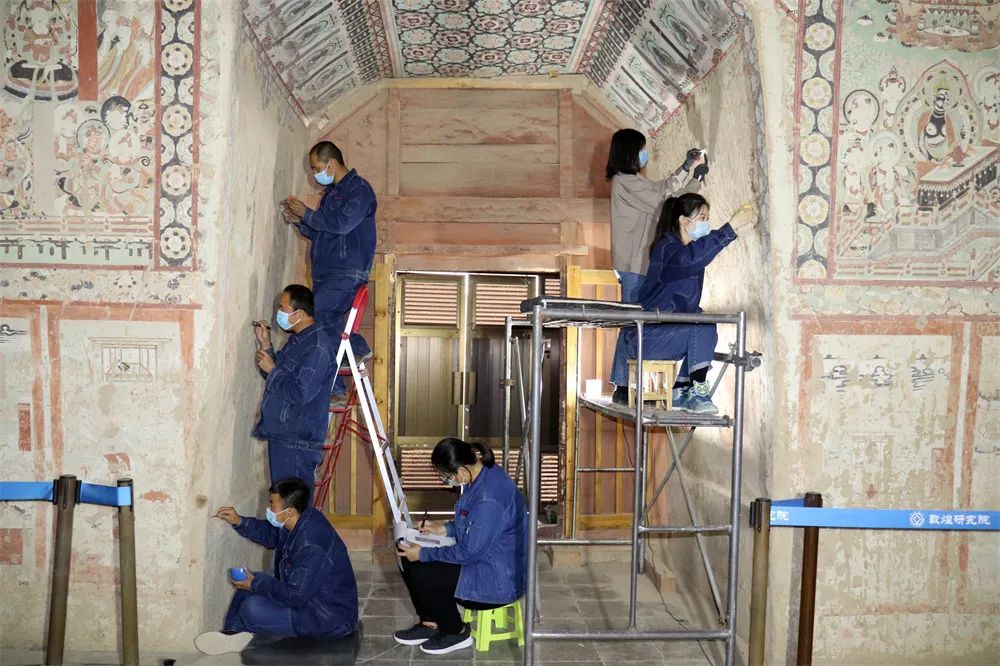
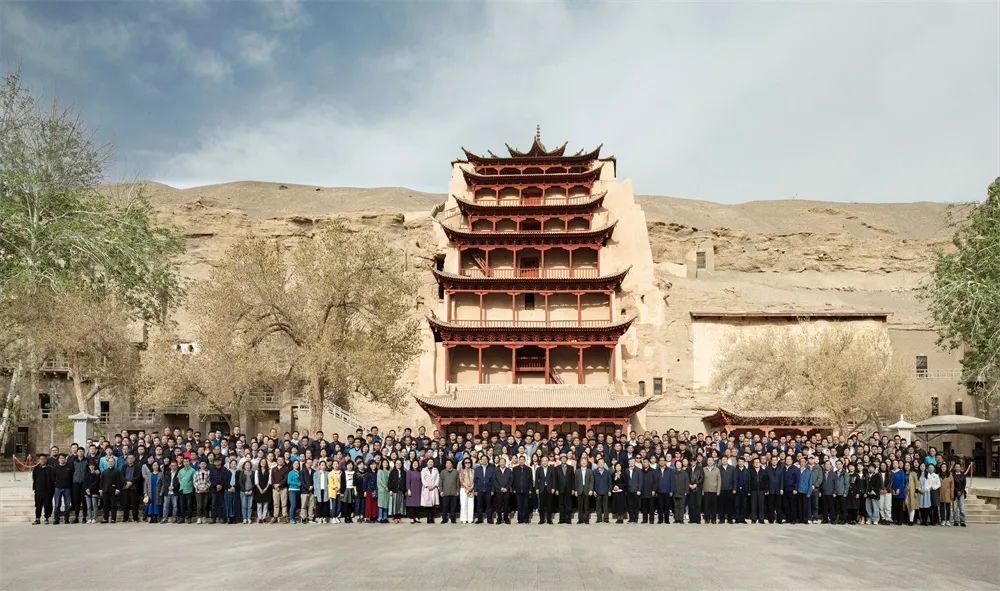
Expand the research field of Dunhuang Studies and form a pattern of collaborative innovation between Dunhuang Studies and economics, society, philosophy, history, geography, ethnicity and other disciplines. Build an international training center for Dunhuang studies, build a database of "Dunhuang studies information resources" and "Documents unearthed in the Cangjing Cave", and implement the digital restoration project of Dunhuang cultural relics lost overseas.
Give full play to the brand power of Dunhuang Forum and "Dunhuang Research", "Grove and Earth Site Protection Research", "One Forum and Two Journals", and expand the international influence of Dunhuang Studies research results. Bearing in mind the entrustment, on the first anniversary of General Secretary Xi Jinping's inspection of the Mogao Grottoes, a seminar on cultural heritage protection, management and inheritance innovation, an academic seminar on commemorating the 120th anniversary of the discovery of the Buddhist scriptures cave, and the 2020 China Great Wall Forum will be held, and the "Dunhuang Grottoes Culture and Art Exhibition" will be launched. ” and toured in Gansu Province, and formed a “model of the times” advanced deeds report group to preach more than 30 times; on the occasion of the second anniversary, the Ministry of Culture and Tourism, the State Administration of Cultural Heritage, and the Gansu Provincial People’s Government held the “Forbidden Journey — The Forbidden City Dunhuang” Special Exhibition", and held a symposium to study the spirit of General Secretary Xi Jinping's important speech at the Dunhuang Academy.
The Mogao spirit of sticking to the desert, being willing to dedicate, having the courage to take responsibility, and pioneering and enterprising is the inexhaustible source and infinite driving force for Gansu Wenbo people to forge ahead.
(According to the State Administration of Cultural Heritage, the original title is "Keep in mind and entrust to forge ahead - Gansu's high-quality development of cultural relics has taken a solid step", and there are editors when The Paper is republished.)
The Paper learned that in the past five years, Gansu Province has invested a total of more than 2.5 billion yuan to carry out 724 cultural relics protection and maintenance projects, and the dangers of national insurance units and important provincial insurance units have been basically eliminated.
Gansu has 16,895 immovable cultural relics, including 7 world cultural heritages, 152 national key cultural relics protection units, and 532 provincial cultural relics protection units. There are 231 museums with 423,400 pieces (sets) of movable cultural relics, including 117,400 pieces (sets) of precious cultural relics. There are 63 memorial halls of various types, 483 immovable revolutionary cultural relics, 12536 movable revolutionary cultural relics (sets), including 4466 precious cultural relics (sets). There are 4 famous historical and cultural cities at the national level and 8 famous historical and cultural cities at the provincial level... The historical relics and red relics are dotted with each other, and the silence is better than the sound.
Protect the first scientific plan to keep the root and soul
Cultural relics protection, merit in the contemporary, benefit in the future.
"Implementation Opinions on Strengthening the Reform of the Protection and Utilization of Cultural Relics", "Implementation Opinions on the Revolutionary Cultural Relics Protection and Utilization Project", "Implementation Opinions on Strengthening the Protection and Utilization of Grotto Temples", "Gansu Province Great Wall Protection Regulations", "Gansu Bingling Temple Grottoes Protection Regulations" "Administrative Measures for the Safety of Cultural Relics in Gansu Province"... In recent years, Gansu has made great efforts to improve the system and mechanism of cultural relics protection. Provincial-level cultural relics protection regulations and measures have been issued one after another, and local cultural relics protection systems have been continuously standardized, providing a legal system guarantee for the protection of cultural relics in accordance with the law. .

Jiayuguan
Gansu always insists on protection first, and scientifically plans and implements major cultural relics protection projects.In the past five years, Gansu Province has invested a total of more than 2.5 billion yuan to carry out 724 cultural relics protection and maintenance projects.
Relying on the natural geographical unit of the Hexi Corridor, based on its important position in the history of Chinese civilization and the development of the Chinese nation, the country's first national cultural heritage route that integrates protection, research, inheritance and promotion, and innovation and utilization - the progress of the "Hexi Corridor National Heritage Route" Successfully, 11 state-supported projects with a capital of more than 70 million yuan have been launched, and key protection and utilization projects such as Suoyang City Ruins, Xuanquanzhi Ruins, Zhangye Dongcang, and Wuwei Confucian Temple have been launched.
"Complete the preparation of the special plan for the protection and utilization of cave temples in Gansu by the end of September 2021; implement a major project for the protection of cave temples, and completely eliminate major dangers in cave temples by the end of 2022; conduct regular health assessments of cultural relics, actively carry out preventive protection, and comprehensively improve the protection of cave temples Ability..." According to the "Implementation Opinions on Strengthening the Protection and Utilization of Grotto Temples" issued by the Gansu Provincial Government, the protection work of the Grotto Temples in Gansu has been pushed forward. Improve the reputation of "Hometown of Grotto Art in Gansu".
The construction and protection plan for the Great Wall, the Long March and the Yellow River National Cultural Park (Gansu section) has been compiled, and Gansu has been included in the national key support provinces. 84 construction projects including Yumen Pass, Jiayuguan Great Wall, Hadapu Red Town, Huining Huishi Site, Dadiwan Site, and Majiayao Site are being accelerated.
Tracing the origin and exploring the unknown, great achievements have been made
Gansu is one of the important birthplaces of Chinese civilization, a key area for the formation and development of Chinese civilization, and an important stage for the exchange and integration of Eastern and Western civilizations.
6 items were selected as "Top Ten New Archaeological Discoveries in China", 4 items were selected as "New Archaeological Discoveries in China", 4 items were selected as "Hundred Years of Archaeological Discoveries", 5 items were awarded "Field Archaeology Award", and 4 items were included in "Archaeological China" Major Projects: Focusing on major projects such as "Chinese Civilization Exploration Project" and "Archaeological China", a series of major archaeological projects such as human origin and evolution, agricultural origin and diffusion, civilization origin and spread, national origin and development, and ethnic exchanges and integration are carried out. The archaeologists' arduous exploration and continuous struggle in Gansu have yielded fruitful results, further clarifying the origin and evolution of early humans and the formation and development of Chinese civilization, demonstrating Gansu's position in the history of Chinese civilization and the development of world civilization.
In 2019, the Baishiya Karst Cave Site in Xiahe County became the first Paleolithic archaeological site in East Asia where Denisovan fossils and Denisovan DNA were found. Significant progress has been made in prehistoric archaeology on the Qinghai-Tibet Plateau, and it is also an international Denisovan archaeological site. The major breakthrough in the study of the tile people has received extensive attention from the academic circles and the public.
In recent years, the Gansu Provincial Institute of Cultural Relics and Archaeology, together with the Institute of Vertebrate Paleontology and Paleoanthropology of the Chinese Academy of Sciences and Lanzhou University and other scientific research institutes, have conducted an archaeological survey of the Shuiluo River, Qingshui River and Hulu River in the eastern part of the Longxi Loess Plateau. More than 20 Paleolithic sites have basically established the Paleolithic archaeological chronological framework in Gansu, especially in the western Loess Plateau from the late Middle Pleistocene to the Late Pleistocene (200,000 to 10,000 years ago). , the development of human behavior, the relationship between the evolution of human adaptive behavior and environmental changes, etc., provide key materials.

The excavation site of Baishiya Karst Cave Site

Murongzhi coffin laboratory cleaning of Tuyuhun royal family tombs in Wuwei Tang Dynasty
Relying on the major projects of "Exploring the Origin of Chinese Civilization" and "Archaeological China", the archaeological research focused on the Geliachuan site in Longdong area, which revealed the early Chinese society, and the Nanzuo site and the Qiaocun site where the empirical civilization and the origin of the early country were derived. Experts believe that important archaeological discoveries such as Geyachuan, Nanzuo, and Qiaocun show that both sides of Longshan Mountain are an extremely important distribution area of Yangshao culture, and they are the main traffic routes for cultural exchanges between China and the West since 5,000 years ago. and the key area of social complexity and early civilization process in the Loess Plateau region.Lixian Luanting Mountain Site, Xishan Site, Dabaozi Mountain Site, Liubatu Site, Qingshui Liya Site, Gangu Maojiaping Site, Zhangjiachuan Xirong Noble Cemetery, Qin'an Wangwa Cemetery, Zhangxian Dunping Cemetery and Ning County The archaeological excavations of a series of early Qin culture or Xirong and Zhou culture sites closely related to the Qin culture, such as the Shijia tombs, have made the cultural landscape of the two-week period in this area clearer, and provided new clues and solutions for solving unresolved problems. new ideas.
Relying on the project of "Investigation, Excavation and Research of Early Metallurgical Sites in Hexi Corridor", the excavation of Xichengyi Site, Konggangwa Site and Huoshiliang Site confirmed that a new archaeological culture, Xichengyi Culture, was named and constructed the Heihe River. Chronological sequence and developmental genealogy of prehistoric archaeological cultures in the basin.
For the first time, the Tuyuhun script and the Tuyuhun Pengzi family cemetery were confirmed; for the first time, a huge number of well-preserved and diverse Tang Dynasty silk fabrics were discovered for the first time... For the first time, the Tuyuhun royal family tombs of the Tang Dynasty in Wuwei, Gansu, were selected as the top ten new archaeological discoveries in the country in 2021. The discovery of this tomb group vividly reveals the historical facts that the Tuyuhun people gradually integrated into the Chinese civilization system in the hundred years since their return to the Tang Dynasty, and provides a glimpse of the changes in historical details such as the ideological concepts, material life, and cultural identity of the Tuyuhun people who returned to the Tang Dynasty. Historical testimony of the formation and development of nation-states, as well as exchanges and integration.
Integrate innovation and development into the overall situation and nourish the society
There are 231 museums in Gansu, with 117,470 pieces/set of precious cultural relics (the actual number is 251,890 pieces). During the "Thirteenth Five-Year Plan" period, more than 1,000 temporary exhibitions of various types were held, and more than 12,000 social and educational activities such as "Four Progress" and research were carried out, and more than 150 million visitors were received...
Since the 18th National Congress of the Communist Party of China, Gansu's museum undertaking has developed vigorously, and has basically formed a new development pattern of the province's museum undertaking with a rational layout, diverse subjects and distinctive features.
Implement the museum exhibition curator system, and take the construction of new museums and the renovation of old exhibitions as opportunities to guide museums to hold various types of exhibitions based on the characteristics of their collections to meet the diverse needs of audiences.

copper galloping horse

Dabaozi Mountain Gold Ornament
Relying on the Gansu Museum Alliance, the provincial, municipal and county-level museums cooperate with each other, actively cooperate with foreign museums, integrate collection resources, jointly hold exhibitions and traveling exhibitions, and create "bringing cultural relics alive", "national treasures and relatives" and "Dunhuang Art Progress". "Campus" three characteristic series of exhibition brands.Introduce the "Silk Road World of Hirayama Ikuo" exhibition and "Cultural Exchange on the Silk Road" exhibition, and send brand-new cultural products to the people of Longyuan. Exhibitions such as "Taking a Long Journey", "Silk Road", "The First Light of the Country", and "Competing for Huaguan" held in the Palace Museum and the National Museum of China have been widely praised.
A museum is a university. Promoting the improvement of the traditional cultural literacy of young people and the cultivation of patriotic feelings is an important mission entrusted to the museum by the times.
All museums in Gansu have set up special places such as youth activity centers, established a collaborative mechanism with the education department, signed a joint construction agreement with the school, through "creating a series of themes, planning a special exhibition, compiling a set of theme teaching plans, and carrying out a group of social education. “Six Ones” of activities, designing a high-quality research course, and building an excellent brand of social education”, organically combining museums with classroom education in primary and secondary schools, social practice activities, and experiential teaching, so as to achieve the goal of cultivating people and educating people through culture. people.
According to statistics, museums in Gansu Province organize an average of 2,400 youth education activities each year, involving nearly 100,000 people.
Systematic protection, joint management and inheritance of red genes
Gansu has a large number of revolutionary cultural relics with rich connotations, wide distribution and distinctive features. Among them, the cultural relics related to the Shaanxi-Gansu Revolutionary Base, the Long March and the Red West Road Army are the most influential.
The seal of the People's Commissar of Finance of the Soviet Government, the suicide note of the martyr Wang Xiaoxi, the birch bark return list... The former site of the Bangluo Town Meeting, the Huining Reunion Tower, the Monument of the Chinese Workers and Peasants' Red Army West Road Army... Pieces of precious cultural relics, revolutionary relics everywhere, records, Witnessing the revolutionary history, carrying and conveying the original mission, it is a precious wealth that inherits the spirit of the revolutionary ancestors and gathers the forge ahead.

 The "Implementation Opinions on Further Strengthening the Protection and Utilization of Revolutionary Cultural Relics in the Province" was issued to clarify the task book and roadmap for the work of revolutionary cultural relics in the new era. The Gansu Provincial Bureau of Cultural Relics has added the Revolutionary Cultural Relics Office, adding 5 staff. The provincial finance has included the city and county-level revolutionary cultural relics protection units into the scope of provincial-level cultural relics protection special funds. The development and reform department has listed the construction of cultural relics protection and utilization facilities as key support objects. The work pattern of revolutionary cultural relics under the leadership of the party committee, department assistance, regional linkage, and joint management has basically taken shape.
The "Implementation Opinions on Further Strengthening the Protection and Utilization of Revolutionary Cultural Relics in the Province" was issued to clarify the task book and roadmap for the work of revolutionary cultural relics in the new era. The Gansu Provincial Bureau of Cultural Relics has added the Revolutionary Cultural Relics Office, adding 5 staff. The provincial finance has included the city and county-level revolutionary cultural relics protection units into the scope of provincial-level cultural relics protection special funds. The development and reform department has listed the construction of cultural relics protection and utilization facilities as key support objects. The work pattern of revolutionary cultural relics under the leadership of the party committee, department assistance, regional linkage, and joint management has basically taken shape.Gansu continues to promote the transformation of revolutionary cultural relics from salvage protection to preventive protection, from primary protection to integrated protection of the surrounding environment, and from a single cultural relic point to linear and regional cultural relics overall protection. To maximize the preservation of the true historical features of revolutionary cultural relics.
Carry out in-depth investigation of revolutionary cultural relics resources, find out the family background and preservation status, and establish a database of revolutionary cultural relics. Continue to improve the "four have" work of revolutionary cultural relics protection units at all levels, clarify protection requirements, implement management and protection responsibilities, and ensure the safety of cultural relics. In 2021, the list of the first batch of immovable revolutionary cultural relics and the first batch of precious movable revolutionary cultural relics in Gansu Province will be announced. There are 483 immovable revolutionary cultural relics and 12536 movable revolutionary cultural relics (sets), including 4466 precious cultural relics (sets). ).
Since 2017, Gansu has invested a total of 120 million yuan, and successively implemented nearly 100 cultural relics protection and utilization projects such as the former site of the revolutionary government in Nanliang, Shaanxi and Gansu, the former site of the Liangdang mutiny, and the camp of Comrade Mao Zedong's Long March in Sancha. The revolutionary cultural relics have basically eliminated major dangers. Conservation status has improved significantly.
Implement the protection and utilization projects of important nodes of the Long March line such as the former site of the Red Army reunion in Huining, the former site of the Bangluo Town meeting, and the former site of the Liangdang mutiny, create a model for the protection and utilization of the former Hadapu meeting site, and gradually form 9 major protection nodes, 3 centralized display belts, 9 The core exhibition garden supports and connects with each other in the Long March cultural relics protection and exhibition system.
The overall planning for the protection and utilization of revolutionary cultural relics in the Shaanxi-Gansu Area, the Shaanxi-Gansu-Ningxia Area (Qingyang City) and the West Route Army Area (Gansu Section) has been completed, and the protection and utilization of 54 revolutionary cultural relics including the former residence of Xi Zhongxun and the site of the West Route Army Yongchang Battle has been promoted in an orderly manner. The project has formed a new situation of the protection and utilization of revolutionary cultural relics of overall planning, contiguous protection, overall display and cascade utilization.
Give full play to the advantages of revolutionary cultural relics resources, and serve the education of party history, the education of revolutionary traditions, and the education of patriotism. Create a new model of "Internet + revolutionary cultural relics". Under the reunion tower, singing red songs, watching performances, visiting memorial halls, and listening to red stories, Huining has become the first choice for the majority of party members to realize their original aspirations and receive education.
Huining, Nanliang, Hadapu and other places combined the protection and utilization of revolutionary cultural relics with the help of rural revitalization, and coordinated the protection and management of ontology, environmental improvement, infrastructure construction, research and interpretation, and research to enhance the people's sense of gain, Happiness.
Keep in mind the entrustment to forge ahead and achieve results one after another
"We must cherish this precious cultural heritage left to us by our ancestors, adhere to the concept of giving priority to protection, strengthen the protection of grotto architecture, painted paintings, and murals, and use advanced science and technology to improve the level of protection, so as to pass on this world cultural heritage from generation to generation." General Secretary Xi Jinping's earnest exhortation has always been remembered by the people of the Mogao Grottoes.
Relying on the Dunhuang Research Institute to build the country's first multi-field coupling laboratory, set up the Dunhuang Cultural Relics Protection Research Center in Gansu Province, actively promote the establishment of the national key laboratory in the field of cultural heritage and achieve phased results, and carry out 65 research projects on cultural relics protection at the provincial and ministerial levels. Efficiently complete the tasks of the national key scientific research platform.
The revision of the "Dunhuang Mogao Grottoes Protection Plan" and the construction of the Gansu Grotto Heritage Monitoring Center, the Mogao Grottoes Digital Display Center (Phase II) and the Dunhuang Cultural Heritage Protection Innovation Base are progressing in an orderly manner. It has successively invested more than 200 million yuan to implement more than 100 comprehensive protection and utilization projects such as restoration of Dunhuang murals, rescue and protection, digitization of cultural relics, and infrastructure improvement. management mode, and promote the application in the cave temples in the province, and continue to expand the coverage of "Chinese characteristics, Dunhuang experience".

The restoration work site of the frescoes in cave 158 of the Mogao Grottoes

In 2019, a group photo of some staff of Dunhuang Research Institute
Scientifically formulate the "Special Plan for the Construction of Dunhuang Highland", implement the leading plan for Dunhuang studies, improve the discipline system of Dunhuang studies, conduct in-depth research on Dunhuang painting and calligraphy, Dunhuang architecture, Dunhuang music and dance, Dunhuang medicine, Dunhuang clothing, Dunhuang cuisine and other categories, and achieve results. One after another, leading the world.Expand the research field of Dunhuang Studies and form a pattern of collaborative innovation between Dunhuang Studies and economics, society, philosophy, history, geography, ethnicity and other disciplines. Build an international training center for Dunhuang studies, build a database of "Dunhuang studies information resources" and "Documents unearthed in the Cangjing Cave", and implement the digital restoration project of Dunhuang cultural relics lost overseas.
Give full play to the brand power of Dunhuang Forum and "Dunhuang Research", "Grove and Earth Site Protection Research", "One Forum and Two Journals", and expand the international influence of Dunhuang Studies research results. Bearing in mind the entrustment, on the first anniversary of General Secretary Xi Jinping's inspection of the Mogao Grottoes, a seminar on cultural heritage protection, management and inheritance innovation, an academic seminar on commemorating the 120th anniversary of the discovery of the Buddhist scriptures cave, and the 2020 China Great Wall Forum will be held, and the "Dunhuang Grottoes Culture and Art Exhibition" will be launched. ” and toured in Gansu Province, and formed a “model of the times” advanced deeds report group to preach more than 30 times; on the occasion of the second anniversary, the Ministry of Culture and Tourism, the State Administration of Cultural Heritage, and the Gansu Provincial People’s Government held the “Forbidden Journey — The Forbidden City Dunhuang” Special Exhibition", and held a symposium to study the spirit of General Secretary Xi Jinping's important speech at the Dunhuang Academy.
The Mogao spirit of sticking to the desert, being willing to dedicate, having the courage to take responsibility, and pioneering and enterprising is the inexhaustible source and infinite driving force for Gansu Wenbo people to forge ahead.
(According to the State Administration of Cultural Heritage, the original title is "Keep in mind and entrust to forge ahead - Gansu's high-quality development of cultural relics has taken a solid step", and there are editors when The Paper is republished.)
Related Posts